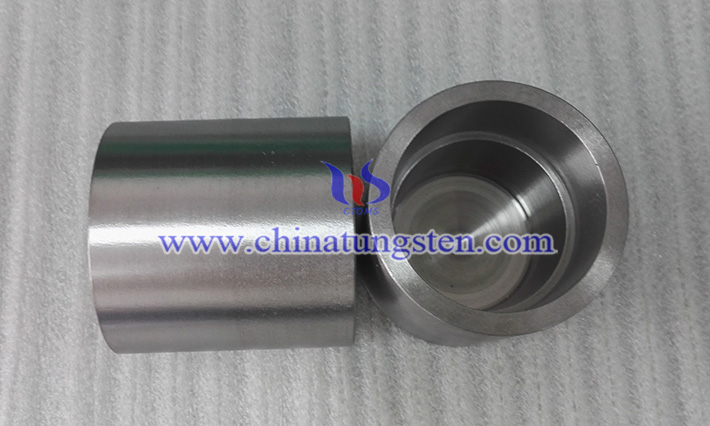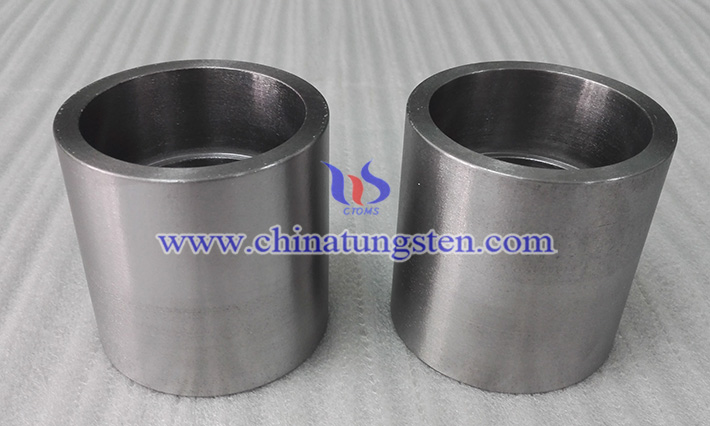Relationship Between Microstructure and Properties of Tungsten Crucible
- Details
- Category: Tungsten Information
- Published on Monday, 09 June 2025 15:26
Although tungsten has excellent material properties as a high melting point metal, its actual performance in high temperature and extreme environments is also profoundly affected by the microstructure of the material. Therefore, it is of great significance to study the relationship between the microstructure and its properties of tungsten crucible to improve its overall reliability and life.
First, microstructure characteristics of W crucible
W crucibles are usually manufactured by powder metallurgy process, and their microstructure mainly includes grain morphology, grain size, porosity, grain boundary characteristics and impurity distribution.
Grain structure: Tungsten has a body-centered cubic (BCC) crystal structure, and the grain grows significantly during the sintering process. The shape of the grains can be equiaxed or columnar, depending on the sintering process and cooling method.

Grain boundary structure: As an important interface region inside the material, the grain boundary can not only hinder crack propagation, but also become the starting point of embrittlement and corrosion, and the enrichment of impurities in the grain boundary has a significant impact on the high temperature stability of the crucible.
Pore distribution: Due to the limitations of the powder metallurgy forming method, there are usually a small number of micropores in the crucible. The number, distribution and closure of pores directly affect their airtightness and corrosion resistance.
Impurity content: Oxygen, carbon, silicon, iron and other impurities in tungsten will be concentrated around grain boundaries or pores, which is easy to form easy oxidation phase or brittle phase, reducing the toughness and thermal shock resistance of the material.
Second, the influence of microstructure on performance
A number of key properties of tungsten crucible, including high-temperature strength, thermal conductivity, corrosion resistance and thermal shock resistance, are closely related to its microstructure.
1. High temperature strength and grain size
Within a certain range, smaller, homogeneous grains increase the strength of the material, which is a manifestation of the "fine grain strengthening" effect. However, if the grain is too small, it is easy to grow rapidly at high temperatures, causing performance degradation; If the grain is too large, the toughness will be reduced, making the material brittle. Studies have shown that grain size between 10–50 μm helps to balance high-temperature strength with thermal cracking resistance.
2. Thermal conductivity and density
Tungsten has excellent thermal conductivity (approx. 170 W/m·K at room temperature), which allows it to transfer heat quickly and evenly, which is beneficial for temperature control in high-temperature processes. The presence of pores and grain boundary defects in the microstructure can significantly reduce thermal conductivity. As a result, the overall thermal conductivity can be improved by increasing the sintering density and grain regularity.
3. Anti-corrosion performance and impurity control
Corrosion often begins at impurities that accumulate in grain boundaries or pores. Impurities such as oxygen and silicon in tungsten form low-melting oxides at high temperatures, which can easily cause local oxidation and material peeling. Therefore, tight control of raw material purity, powder handling and sintering atmosphere is essential to improve corrosion resistance.

4. Thermal shock resistance and grain boundary toughness
Thermal shock refers to the ability of a material to resist cracking after experiencing quenching of cold and heat. The thermal shock of tungsten crucible is limited by the grain structure and the bond state of grain boundaries. Strong grain boundaries delay crack propagation, while too many coarse grains or brittle phases reduce thermal shock resistance.
Third, technical means to optimize the microstructure
In order to obtain the ideal microstructure, source control and process optimization are the key paths:
Powder optimization: ultra-fine tungsten powder with high purity and uniform particle size is selected, which can effectively control the initial state of grains;
Isostatic pressing and hot isostatic pressing (HIP): increase density and reduce porosity;
Sintering atmosphere control: sintering in high-purity hydrogen or vacuum to avoid the introduction of oxidizing impurities;
Grain control: Grain growth is controlled by multi-stage heating, heat preservation treatment and addition of grain inhibitors.
Subsequent heat treatment: such as recrystallization annealing, can remove stress, optimize grain boundary distribution, and improve stability.
- Chinatungsten Online: www.chinatungsten.com
- CTIA GROUP LTD: en.ctia.group
- Tungsten News & Price: www.ctia.com.cn
- Molybdenum News & Price: news.molybdenum.com.cn
- Tel.: 86 592 5129696; Email: sales@chinatungsten.com



 sales@chinatungsten.com
sales@chinatungsten.com